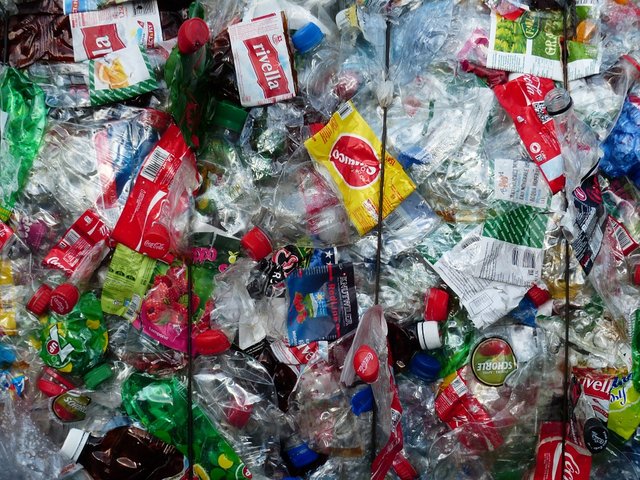DaVinci Times #0.4
The e-skin: the future of biomedicine and robotics
The skin is the largest organ of our body and plays fundamental roles for our life: it allows us to perceive sensory stimuli (thermal, pressure and pain), protects us from the attack of microorganisms, chemical agents and trauma, allows the body thermoregulation, prevents loss of water, participates in the metabolism of D3 vitamin and much more!

Imagine CC0 Creative Commons - Source
Tears, burns or serious injuries can lead to the loss of these functions and their treatment is not always easy.
For this reason, the development of biologically active skin substitutes, which can speed up the treatment and reduce the possibility of developing discards or infections, has attracted more and more the interest of researchers.
In recent years they have made incredible progress, with regard to the development of these artificial skins, but researchers at the University of Colorado Boulder have implemented a new and innovative property.
The e-skin we are talking about is very thin and semi-transparent and in addition to its malleability, it is able to perceive heat, pressure and is also able to regenerate, and is eco-friendly. What could we ask for more?
But what makes this e-skin so special?
The answer lies in its components: a polymer (polyimine) and silver nanoparticles that confer elasticity, chemical stability and electrical conductivity. The property of self-healing is conferred by the addition of three chemical compounds based on ethanol.
The recyclability of the product is given by the fact that it is able to dissolve in the ethanol itself, allowing to recover the components of which it is composed and then recycle them and create a new artificial skins.
Given these extraordinary properties, future electronic devices can be integrated with sensory stimuli; one of the various examples is the possibility of developing prostheses for the replacement of a limb, which can allow the perception of the pressure applied to objects or their temperature.
Not only pollutants
One of the problems that humanity will have to solve in the next few years is certainly the accumulation of plastic, in landfill but, above all, in water bodies. An English and a Brazilian University have recently collaborated on a project that will revolutionize the perception we all have about plastic.

Imagine CC0 Creative Commons - Source
Currently, plastic represent one of the major sources of environmental pollution for our planet. In the future, however, thanks to this study it’ll be possible to use these scraps to “purify” the bodies of water from substances much more dangerous, as dyes. It seems in fact that, if properly conjugated with photocatalytic nanoparticles, this could inactivate many chemical compounds.
Article source
Twins of NASA
The preliminary results of a NASA study, that aimed to assess what the influences of “life in space” on our body could be, compared to those of “life on earth”, were finally published. The experiment was performed thanks to the homozygous twins Scott and Mark Kelly.

Imagine CC0 Creative Commons - Source
Scott spent a year in orbit in the International Space Station, while Mark waited for his return on Earth. When the astronaut returned, it was therefore possible to make a comparison. Among the results, some predictable phenomena such as changes in metabolism, but also other unexpected, such as the elongation of the astronaut’s telomeres and some changes in a fraction of the genome (about 7%), probably implicated in the control of the immune system.
Article source
Post of the Day
by @greenrun

Imagine CC0 Creative Commons - Source
Today @greenrun explains us why our body perceives the temperature of different objects differently. Why stay in a room at 15°C can be pleasurable, while a shower at the same temperature would be considered too cold?

Immagine CC0 Creative Commons, si ringrazia @mrazura per il logo ITASTEM.
CLICK HERE AND VOTE FOR DAVINCI.WITNESS
Keep in mind that for organizational reasons it’s necessary to use the “steemstem” and “davinci-times” tags to be voted.
@aboutcoolscience - @farmacistasmz - @spaghettiscience
L'e-Skin: il futuro della biomedicina e della robotica
La pelle è l'organo più esteso del nostro corpo e svolge dei ruoli fondamentali per la nostra vita: ci permette di percepire gli stimoli sensoriali (termici, pressori e dolorifici), ci protegge dall'attacco dei microrganismi,degli agenti chimici e dai traumi, permette la termoregolazione corporea, impedisce la perdita di acqua, partecipa nel metabolismo della vitamina D3, e molte altre ancora!

Imagine CC0 Creative Commons - Source
Lacerazioni, ustioni o lesioni gravi possono portare alla perdita di queste funzioni e il loro trattamento non è sempre facile.
Per questo motivo, lo sviluppo di sostituti cutanei biologicamente attivi, che consentano di velocizzarne la cura e di ridurre la possibilità di sviluppare rigetti o infezioni, ha attirato sempre più l'interesse dei ricercatori.
Negli ultimi anni si sono fatti incredibili passi avanti, per quanto riguarda lo sviluppo di queste pelli artificiali. Ma i ricercatori dell'Università del Colorado Boulder hanno implementato una nuova ed innovativa proprietà. L'e-skin di cui stiamo parlando, è molto sottile e semi-trasparente, ed oltre alla sua malleabilità, è in grado di percepire il calore, la pressione ed è anche in grado di rigenerarsi, inoltre è eco-friendly. Cosa potremmo chiedere di più?
Ma cos'è che rende questa e-skin così particolare?
La risposta sta nei suoi componenti: un polimero (poliimmina) e da nanoparticelle d’argento che conferiscono elasticità, stabilità chimica e la conducibilità elettrica. La proprietà di autorigenerarsi è conferita da l'aggiunta di tre composti chimici a base di etanolo.
Ma la riciclabilità del prodotto è dato dal fatto che è in grado di sciogliersi nell'etanolo stesso, consentendo di recuperare i componenti di cui è composta e quindi riciclarli e creare una nuova pelle artificiale.
Date queste straordinarie proprietà, i dispositivi elettronici potrebbero essere integrati a stimoli sensoriali; uno dei vari esempi, è la possibilità di sviluppare delle protesi per la sostituzione di un arto, che possano consentire la percezione della pressione applicata sugli oggetti o la loro temperatura.
Non solo inquinanti
Uno dei problemi che da qui ai prossimi anni l’umanità dovrò riuscire a risolvere è sicuramente quello dell’accumulo di plastica, nelle discariche ma, soprattutto, nei corpi idrici.

Imagine CC0 Creative Commons - Source
Un’università inglese e una brasiliana hanno recentemente collaborato per un progetto destinato a rivoluzionare la percezione che noi tutti abbiamo della plastica. Attualmente, la plastica rappresenta una delle maggiori fonti di inquinamento ambientale per il nostro pianeta. Grazie a questo studio, però, in futuro potrebbe essere possibile utilizzare questi scarti per “depurare” i corpi idrici da sostanza ben più pericolose come i coloranti. Sembra infatti che, se opportunamente coniugata con nanoparticelle fotocatalitiche, questa potrebbe inattivare molti composti chimici.
I gemelli della NASA
Sono stati finalmente pubblicati i risultati preliminari di uno studio della NASA che mirava a valutare quali potessero essere le influenze della “vita nello spazio” rispetto a quelle della vita sulla terra.

Imagine CC0 Creative Commons - Source
L’esperimento è stato eseguito grazie ai gemelli omozigoti Scott e Mark Kelly. Scott ha passato un anno in orbita nella Stazione Spaziale Internazionale, mentre Kelly ne ha atteso il ritorno qui sulla terra. Al rientro dell’astronauta è stato quindi possibile eseguire un confronto. Tra i risultati sono stati evidenziati fenomeni prevedibili come il cambio del metabolismo, ma anche altri inaspettati, come l’allungamento (o il minor accorciamento) dei telomeri dell’astronauta, e alcune modifiche in una frazione del genoma (circa il 7%), probabilmente implicata nel controllo del sistema immunitario.
Post del giorno
by @greenrun

Imagine CC0 Creative Commons - Source
Oggi @greenrun ci spiega perché il nostro corpo percepisce in modo diverso la temperatura di oggetti diversi. Come mai stare in una stanza a 15°C può essere piacevole, mentre una doccia alla stessa temperatura verrebbe considerata “gelida”?

Immagine CC0 Creative Commons, si ringrazia @mrazura per il logo ITASTEM.
CLICK HERE AND VOTE FOR DAVINCI.WITNESS
Si ricorda che per motivi organizzativi è necessario utilizzare le tag “steemstem” e “davinci-times” per essere votati.
@aboutcoolscience - @farmacistasmz - @spaghettiscience
Times è sinonimo di qualità e lo dimostra con questo post! Quando si dice creare valore. Un saluto @giornalista
Degli ottimi articoli, complimenti.
Congratulazioni! Il tuo post è stato scoperto dal Team @OCD e inserito nella sua rassegna quotidiana international daily compilation 130 Puoi seguire @ocd per saperne di più sul progetto e vedere altri post preziosi! Ci sforziamo per la trasparenza. Se desideri che i tuoi post siano rilanciati da @ocd e raggiungano un pubblico più grande, utilizza il tag # ocd-resteem, non deve essere il primo. Per saperne di più puoi leggere qui ](https://steemit.com/ocd-resteem/@ocd/ocd-introducing-ocd-resteem-get-resteemd-by-ocd). @ocd adesso è anche witness. Puoi dare il tuo voto a @ocd-witness con SteemConnect oppure su Steemit Witnesses per aiutare a sostenere altri autori sottovalutati!
Grazie!
que bello me gusta tu post
<3